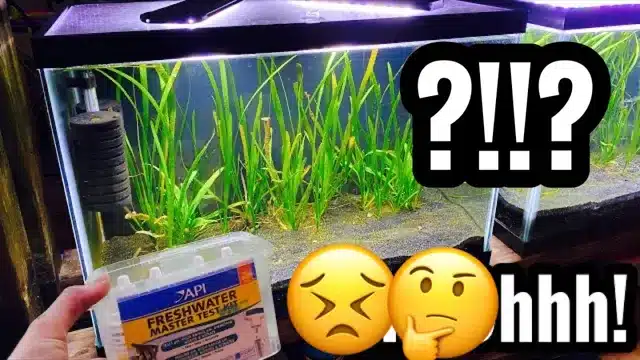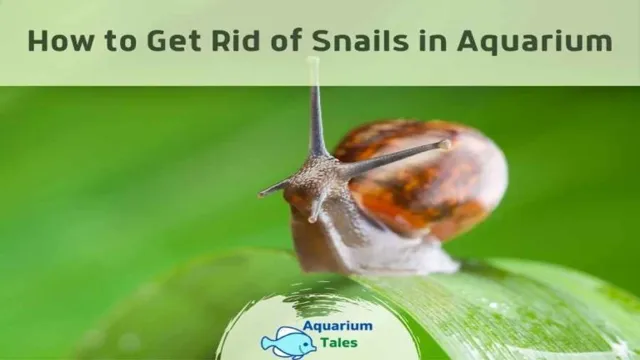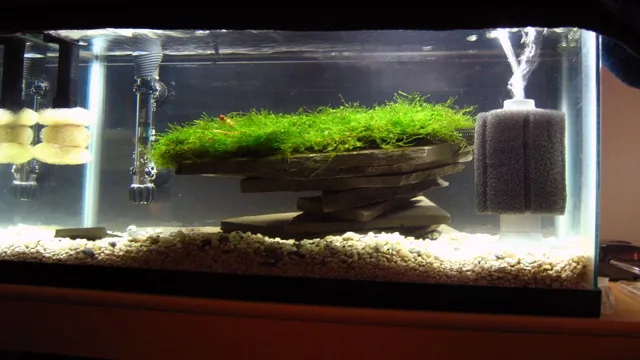Welcome to the wonderful world of aquascaping! Creating a lush underwater garden is a fulfilling endeavor for any fish tank enthusiast. One way to add an extra touch of natural beauty to your aquarium is by adding moss to your rocks and stones. Not only does it add a pop of green, but it also provides a natural hiding place for your fish and a source of food for some.
To successfully grow moss on stone in your aquarium, you need to know the right procedure. In this blog post, we will cover everything you need to know, including choosing the right type of moss, preparing the stone, attaching the moss to the stone, and maintaining it in the long run. So, if you’re wondering how to achieve that natural-looking aquarium of your dreams, stay tuned for our expert tips and tricks for growing moss on stone in your aquarium.
Whether it’s a rough and rugged look or a smooth finish you’re after, we’ve got you covered. Let’s get started!
Introduction: The Benefits of Moss in an Aquarium
If you’re looking to add some natural beauty and health to your aquarium, growing moss on stones is a great way to do it. Moss provides numerous benefits to your fish and plants, as well as aesthetic appeal. For example, it helps regulate the tank’s water quality by absorbing excess nutrients and filtering out pollutants.
It also serves as a breeding ground for microorganisms, which can offer a source of food for your fish. Lastly, moss-covered stones create a natural-looking environment for your aquarium inhabitants, which can reduce their stress levels and increase their overall health. To grow moss on stone in your aquarium, start by selecting a type of moss that is suitable for your tank’s water conditions and lighting.
Then, tie the moss onto the stone using a fishing line or super glue gel. Over time, the moss will begin to spread and take root, creating a beautiful and beneficial addition to your aquarium.
1. The Aesthetic Appeal of Moss
When it comes to creating a visually stunning aquarium, few things beat the aesthetic appeal of moss. The lush green foliage of moss adds depth and dimension to any tank, creating a more natural and lifelike environment for your fish to thrive in. Not only does it look great, but moss also has numerous benefits for your aquatic ecosystem.
It provides an excellent source of food and shelter for fish and other aquatic creatures, helping them to feel safe and secure in their environment. Additionally, moss helps to regulate water quality by absorbing excess nutrients and reducing nitrate levels, promoting a healthier and more balanced ecosystem. Whether you’re a seasoned aquarist or just starting out, incorporating moss into your aquarium is a sure way to create a beautiful and thriving aquatic environment.

2. Moss Proliferates Easily
When it comes to aquascaping, moss is a popular choice among aquarium enthusiasts. One of the main benefits of moss is that it proliferates easily, making it a great addition to any tank. This means that not only will it spread quickly, but it also requires little maintenance.
Moss can attach to almost any surface, making it versatile and easy to work with. Plus, it provides natural filtration and helps maintain the water quality for your fish. Whether you’re looking to create a lush green underwater landscape or simply want to add some texture to your tank, moss is a fantastic option.
So why not give it a try and see the benefits for yourself? Your fish will thank you!
3. Moss Removes Toxins from Water
Moss can be a fantastic addition to an aquarium for many reasons, including its ability to remove toxins from the water. Moss is known for its ability to absorb nutrients, heavy metals, and other toxins from the water column. This natural filtering process not only creates a healthier environment for fish and other aquatic life but also helps to maintain clean, clear water.
Additionally, moss can provide cover and a food source for fish and other creatures living in the aquarium. When considering adding moss to an aquarium, be sure to research the specific type of moss that will work best for your setup and the species of fish you are keeping. By incorporating moss, you can create a more natural and vibrant environment for your aquatic pets while also helping to maintain optimal water quality.
Choosing the Right Moss for Your Aquarium
If you’re looking to add some natural charm to your aquarium, growing moss on stone is an excellent option. But before you start, it’s important to choose the right type of moss for your aquarium. Java moss, Christmas moss, and flame moss are some of the most popular options due to their ease of growth and ability to thrive in low light conditions.
Java moss is a favorite among beginner aquarists because of its quick growth and hardiness. Getting it to attach to your stone is easy, just tie it down with some fishing line and watch it spread. Christmas moss and flame moss are also great choices, with their unique and beautiful textures adding an extra touch of elegance to your aquarium. (See Also: How to Make Aquarium Decor: DIY Tips and Ideas for Stunning Underwater Landscapes)
So why not try growing moss on stone in your aquarium, and add a touch of the natural world to your underwater oasis!
1. Java Moss
Java Moss is one of the most popular choices for aquarium moss enthusiasts due to its versatility and adaptability. This moss species is perfect for aquariums as it can grow in low-light environments and soft water conditions. Java Moss is known to be easy to maintain and provides natural shelter for aquatic creatures, making it a great choice for those who want to create a natural-looking habitat.
Moreover, this moss species can also help purify the water in your aquarium by absorbing excess nutrients and waste, making it an ideal choice for those who are concerned about keeping their aquarium water clean and healthy. Overall, if you’re looking for an easy-to-maintain, natural-looking, and beneficial addition to your aquarium, Java Moss is definitely worth considering.
2. Flame Moss
When it comes to choosing the right moss for your aquarium, you need to consider a few factors to ensure its survival and growth. One of the best options available in the market is the flame moss. Its unique shape and vibrant green color can add beauty to any aquarium.
This moss can grow both in low and high light intensity conditions, making it a great choice for beginners. Moreover, flame moss requires minimal maintenance, making it an excellent option for those who don’t have the time or energy to dedicate to high-maintenance aquarium plants. With its dense, compact growth and ability to anchor to various surfaces, including rocks and driftwood, this moss can transform your aquarium into a mesmerizing aquatic environment.
So, if you’re looking for a stunning and low-maintenance plant for your aquarium, consider adding flame moss to your collection.
3. Christmas Moss
When it comes to choosing the right type of moss for your aquarium, one popular option is Christmas Moss. This type of aquatic moss is known for its beautiful green color and delicate, fern-like shape. It’s also relatively easy to care for, making it a great choice for beginner aquarium enthusiasts.
Christmas Moss can be used to create beautiful underwater landscapes and can be attached to driftwood or rocks to create a natural-looking environment for your fish. Plus, it’s a great hiding spot for shy or timid fish. To keep Christmas Moss healthy, make sure to give it plenty of light and regular water changes.
With a little bit of care and attention, your aquarium will be thriving in no time with this vibrant and stunning moss.
Preparing the Stone for Moss Growth
If you’re looking to create a naturally beautiful aquarium, one popular way is to grow moss on stones. This can create a natural and calming environment for your fish to swim in. However, preparing the stone for moss growth is crucial for this method to succeed.
Firstly, you’ll want to choose the right type of stone – porous stones work best as they allow the moss to grow into the crevices. Once you have your stone, give it a good clean to remove any debris or contaminants. Afterward, you’ll want to create some rough crevices using a chisel or hammer – this will give the moss plenty of surface area to take root.
Finally, soak the stone for a week or so before adding it to your aquarium to remove any remaining impurities. By following these steps, you’ll be well on your way to creating a thriving moss-covered stone in your aquarium.
1. Clean and Prepare the Stone Surface
When it comes to preparing the surface of a stone for moss growth, there are a few steps you need to take before you can expect to see any results. First and foremost, the stone must be thoroughly cleaned. This means removing any dirt, debris, or other contaminants that may have accumulated on the surface over time.
In addition, any loose bits of stone or other debris should be removed to create a smooth, even surface for the moss to grow. Once the stone is clean, it’s time to prepare the surface for moss growth. This can involve a variety of techniques, including sandblasting or brushing the surface to create an uneven texture that will better hold onto the moss. (See Also: How to Care for Koi Fish in Aquarium: Tips and Tricks for a Healthy Swim!)
You may also want to apply a special solution designed to promote the growth of moss and other similar plants. With the right preparation, your stone can be transformed into a verdant, vibrant area full of natural life.
2. Moss Attachments
If you’re looking for a unique way to add character to your garden, consider adding moss to your stones. Moss attachments are a popular way to give your garden a natural and rustic feel. However, before adding moss to your stones, it’s essential to prepare them properly.
First, make sure the surface of the stone is clean and free of debris. You can use a wire brush to remove any loose dirt or grime. Next, you’ll need to rough up the surface of the stone to create a texture that will allow the moss to attach.
This can be done by using sandpaper or a wire brush to gently score the surface of the stone. Once you’ve completed these steps, you’re ready to add a moss slurry to the stone. The moss will then attach to the rough surface, creating a beautiful and natural appearance.
Remember to regularly mist your moss attachments to keep them healthy and vibrant. With a little bit of effort, you can transform your garden with these unique and charming moss attachments.
Moss Growth Strategies for Your Aquarium
If you’re looking to create a beautiful and natural-looking aquarium, growing moss on stones is an excellent option. However, it’s important to follow a few key strategies to ensure successful growth. First, choose the right type of moss for your aquarium.
Many mosses, such as Java moss, are easy to grow and require minimal maintenance. It’s also important to create the right environment for your moss to thrive. This means providing adequate light, water flow, and nutrients.
Finally, it’s crucial to properly attach your moss to your stones. Using mesh or thread to secure the moss in place can help it grow and spread more effectively. By following these tips, you can create a stunning and natural-looking aquarium that will be the envy of all your friends and family.
1. Keep the Stone Moist
If you’re looking to cultivate moss in your aquarium, one of the primary strategies to keep in mind is to keep the stone moist. Moss often thrives in damp conditions, so be sure to regularly mist the stone or add a small amount of water to the aquarium to maintain sufficient moisture levels. Additionally, it’s important to avoid exposing the stone to direct sunlight, as this can dry out the moss and inhibit growth.
Instead, consider placing the stone in an area of the aquarium that receives indirect or diffused light so that the moss can thrive. By keeping the stone consistently moist and away from direct sunlight, you can help to encourage healthy moss growth in your aquarium.
2. Providing Sufficient Lighting
If you’re aiming for lush green moss in your aquarium, providing sufficient lighting is one essential strategy to ensure its growth. Mosses require light to photosynthesize and produce food, and stronger light intensity will promote healthier and faster growth. However, too much light can also be harmful, leading to algae blooms and unhealthy water conditions.
It’s important to balance the light intensity and duration to optimize the conditions for moss growth without compromising the overall health of your aquarium. Investing in a high-quality LED light and setting its timer to mimic natural sunlight cycles can help provide the necessary lighting for your aquatic mosses. Consistency is also key, so ensure that your aquarium’s light exposure remains stable and limit disturbances to allow your mosses to fully establish their growth.
With these strategies, you can enjoy a thriving moss ecosystem in your aquarium. (See Also: How to Glue Wood to Rocks Aquarium: Tips & Tricks for a Firm and Safe Bond)
3. Regular Pruning
Regular pruning is an essential strategy for managing moss growth in your aquarium. As moss tends to grow quickly, it can easily take over your tank if not regularly trimmed. When pruning, it’s crucial to use sharp scissors to avoid tearing the moss, which could cause it to die off.
Additionally, you should only remove part of the moss at a time to avoid damaging the plant. Regular pruning not only helps keep the moss at bay, but it also promotes healthy growth and keeps your aquarium looking aesthetically pleasing. So, if you want to maintain a healthy and thriving aquarium, make sure to add regular pruning to your moss growth strategy.
Conclusion: Experience the Beauty of Moss-Infused Aquarium
In conclusion, growing moss on stone in an aquarium can be a rewarding and relaxing activity for both your aquatic pets and yourself. Whether you’re looking to create a naturalistic environment or simply add a touch of green to your tank, moss is a great choice. So don’t be afraid to get your hands dirty and experiment with different moss species, lighting, and water parameters.
Who knows, your moss-covered stone might just become the envy of the aquarium community and a favorite spot for your fish to lounge on. As the saying goes, “moss grows where nothing else can, and where moss grows, something green remains.”
FAQs
What are the benefits of growing moss on stone in your aquarium?
Moss provides a natural environment for your fish and can aid in water filtration and oxygenation.
What type of stone is best for growing moss in an aquarium?
Porous rocks such as lava rock or granite work well for growing moss, as they provide a surface for the moss to attach to.
How do I prepare my stone for growing moss in an aquarium?
Scrub the stone with a brush to remove any debris, and soak it in water for a few days to ensure it is fully saturated.
Where can I obtain moss for my aquarium?
Moss can be purchased from aquarium stores or online, or it can be harvested from other aquariums or outdoor sources.
How do I attach moss to the stone in my aquarium?
Tie small pieces of moss to the stone with fishing line or cotton thread until it attaches and starts to grow on its own.
How often should I trim my moss in my aquarium?
Trimming every few weeks will help promote healthy growth and prevent overgrowth.
Can moss survive in low light conditions in an aquarium?
Yes, moss can thrive in low light conditions, making it a great addition to any aquarium set-up.







